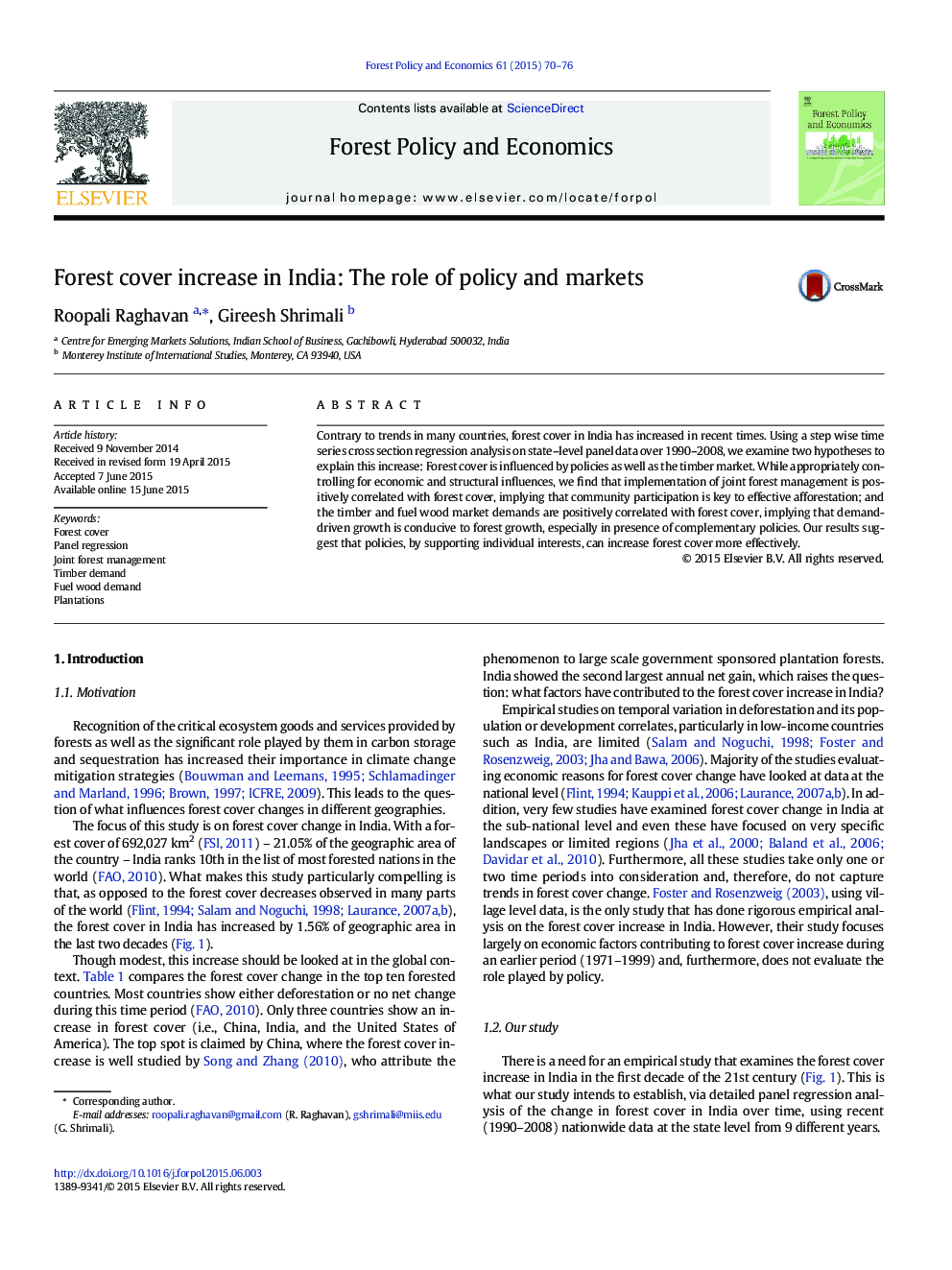| Article ID | Journal | Published Year | Pages | File Type |
|---|---|---|---|---|
| 91144 | Forest Policy and Economics | 2015 | 7 Pages |
•We use panel regressions to investigate drivers of forest cover increase in India.•Joint forest management implementation is positively correlated with forest cover.•Wood market demands are positively correlated with forest cover.•Policy and demand-driven-plantations appear to drive forest cover in India.
Contrary to trends in many countries, forest cover in India has increased in recent times. Using a step wise time series cross section regression analysis on state–level panel data over 1990–2008, we examine two hypotheses to explain this increase: Forest cover is influenced by policies as well as the timber market. While appropriately controlling for economic and structural influences, we find that implementation of joint forest management is positively correlated with forest cover, implying that community participation is key to effective afforestation; and the timber and fuel wood market demands are positively correlated with forest cover, implying that demand-driven growth is conducive to forest growth, especially in presence of complementary policies. Our results suggest that policies, by supporting individual interests, can increase forest cover more effectively.
